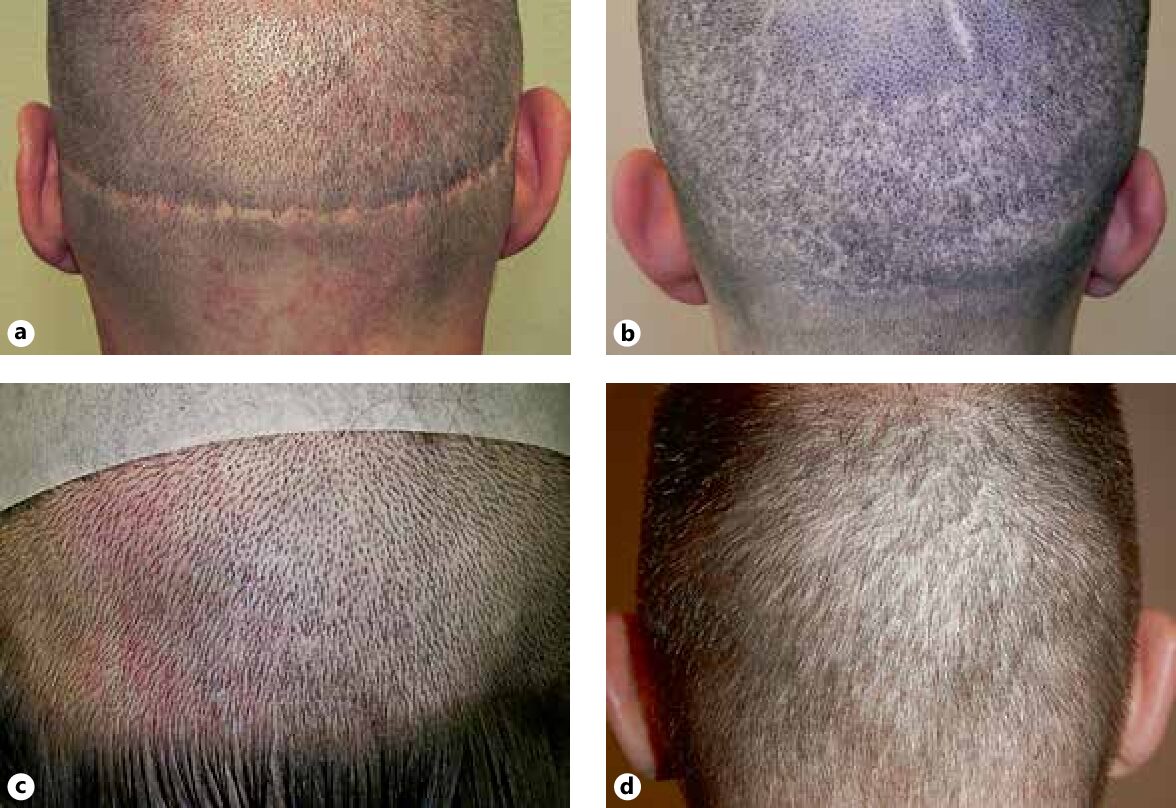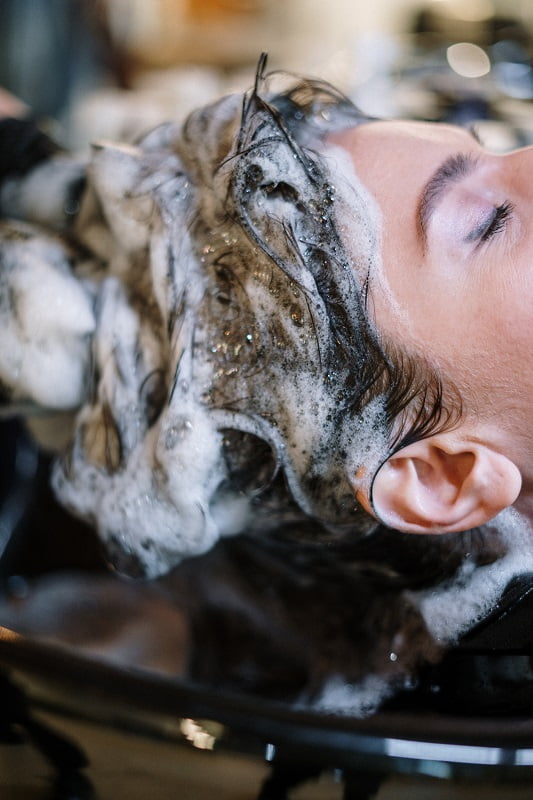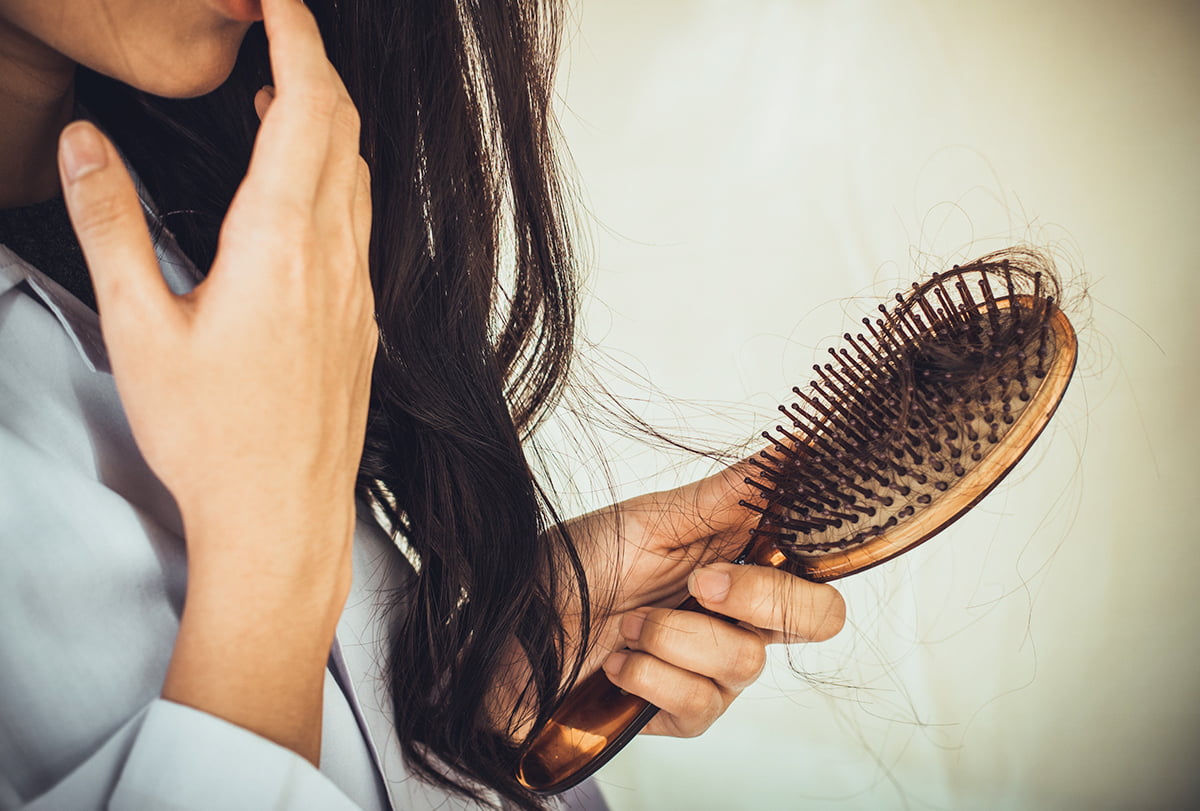best Advancement in Hair Transplantation

Advancement in Hair Transplantation
A standard hair transplantation procedure involves the removal of donor strip of
hair from the back of the head from where the follicular unit grafts are dissected under a microscope.
These grafts are then preserved in saline and are then transplanted on a bald patch on the crown area of the scalp.
Given the time consuming and tedious nature of this procedure, a hair transplant surgeon is often able to transplant only about 500 to 600 follicular unit grafts per day.
However, thanks to the recent hair transplant advances, this technique is often replaced by the follicular unit extraction (FUE).
The cost per graft of FUE is typically twice the cost of the standard follicular unit hair transplant procedure discussed above but it is comparatively faster and minimally invasive.
Some hair transplant advances
In a typical FUE procedure a small round punch is made in the donor area to directly extract 1, 2, 3 and 4 hair follicular unit grafts.
The follicular units extracted using this process is typically referred to as “blunt dissection” where a punch is made to envelope the entire follicular unit separating it from the surrounding soft tissues.
Once the underlying follicular unit is separated from the surrounding tissues, it is easily extracted using a small forceps.
The small holes left behind after the follicular unit extraction gradually heal over the next few days and are not detectable to the naked eye once the patient’s hair grows out. The healing time is much less than the donor strip extraction procedure.
While the FUE procedure has been adopted by most hair transplant clinics, the standard strip excision method is still the most popular hair transplant procedure because it is more economical than the FUE.
Moreover, due to some recent hair transplant advances such as the use of trichophytic closure technique, the linear donor scar created by
the strip excision procedure is now often rendered almost undetectable to the naked eye. This advancement in the hair transplantation technique has made FUE procedure relatively less appealing.
Hair transplantation research
Besides the hair transplant advances in the transplantation procedures, a lot of research is also underway to clone the hair.
If the hair transplantation research is successful it will be possible to make several copies of donor hair in the laboratory.
The application of this technique would be used in the form of hair transplantation. In the traditional procedures, the biggest limitation is often the donor which is not able to meet required density.
However, hair cloning promises to overcome this problem by having the amount of hair required to be grown in a laboratory from a single donor hair and then implanting it into the scalp.
Hair transplantation research for cloning is very difficult and there are many hurdles that have to be overcome regarding the safety and cosmetic
characteristics of the cloned hair. Some hair transplantation research has also provided breakthrough for some hair loss medication like Dutasteride.
How Many Hair Transplant Grafts Do You Need?
When you shop for a hair transplant surgeon, you will find that different doctors give widely varying estimates of the number of grafts you will need.
This can make you very uncertain about the wisdom of even getting a hair transplant. It helps to have a fair idea of what to expect.
Unfortunately, there are hair transplant surgeons who do not take their position of respect seriously. Some doctors are even
transplanting donor hair into areas where the patient still has hair. Perhaps this is easier than placing it where it rightfully belongs – on the balding spots.
For whatever reason, some hair transplant patients are not getting the number of grafts on their balding areas as they are billed.
This is testified by certain doctors who have seen the results. The density of hair on these patients’ heads is not commensurate with the number of grafts they supposedly got.
The best hope a patient has of getting what he pays for in a hair transplant is to learn to calculate the number of grafts he needs to cover his balding area.
If the surgeon he sees is not in that ballpark, it may be wiser to look for another surgeon. If however, the surgeon estimates a similar number, just make sure all the grafts go onto the balding parts of your scalp.
To calculate the number of grafts you need for hair transplant surgery, there are several factors to take into account.
The thickness of the hair shaft makes a difference. Whether the hair is curly or straight determines if the hair will lie flat or stand up, creating more fullness.
Another important factor for hair transplant is the color of the hair in contrast to the color of the skin. For a light-skinned man with light-colored hair, or a dark-skinned man with dark colored hair, it takes a certain amount of hair to cover the baldness.
However, a light-skinned man with very dark hair will need much more hair to provide the same amount of coverage.
You should figure that the average number of hair transplant grafts needed to cover a balding area is 25% of the original hair that was there.
You can move up or down from this figure according to your other factors such as thickness, curliness, or color. Then, you can use this number to figure up the grafts needed.
Based on the fact that the average Caucasian male has a density of 2 hairs per millimeter, it can be assumed that the average density of hair is 1250 hairs per square inch. Figuring at an average of 2 hairs per follicular unit, it would take 625 follicular units per square inch.
To get 25% of that, you would need 156 follicular units per square inch. All that remains is to measure your balding area and multiply the number of square inches by 156.
When you know what number of grafts to expect during your hair transplant surgery, you will be a savvy consumer. It does not hurt one bit go into the process with an idea of your own about how the treatment should go.
How Are Follicular Units Used in Hair Transplant Surgery?
Certain doctors have been aware of follicular units for a long time now, but the knowledge only recently made its way into hair transplant methods. Now these ideas are being used in hair restoration every day.
To understand how follicular units have affected hair transplant surgery practices, it is necessary to first understand what a follicular unit is. A follicular unit is a single entity that is made up of several parts. All these parts are necessary to the whole.
The first part, and the one most people getting hair transplant surgery are interested in, is the hairs. There should be one to four full hair follicles in the unit and one or two fine hairs as well. There are sebaceous glands in the follicular unit which produce oil.
The follicular unit is a living unit with muscle, nerves and blood vessels that are all tiny enough to fit into this small package.
The unit is set off by a band of collagen that holds it together. If you look under a microscope at a scalp, you can see follicular units growing in just this way.
The idea of bringing this information into hair transplant procedures led to innovative surgical methods. Rather than just moving around individual hair follicles, surgeons actually moved a unit which contained everything the hair needed to keep growing. The results were ground-breaking.
One way surgeons used to move the donor follicular units to the balding areas was by single strip harvesting. This is done by moving small strips of tissue containing follicular units. This method keeps the units intact and ready to transplant. Earlier methods such as mini-grafting and micro-grafting broke up the follicular units.
As a part of the hair transplant process with Follicular Unit Transplantation (FUT), a new microscope technique was used. It is called stereomicroscopic dissection. This means that the follicular units are carefully taken out of the donor tissue and kept individually intact.
When doctors use hair transplant procedures with FUT, they do not have to use quite as large of a donor site. The follicular units are small and they can be separated from tissue that has no hair, under the microscope. That way, only the tissue that grows hair is transplanted. It is a much more efficient procedure in that way.
Follicular units placed during hair transplant procedures are put into tiny holes the size of needles. The insertion sites heal quickly, and they leave no marks. This makes for a much more comfortable recovery and better results.
FUT hair transplant procedures can make a big difference in the number of times a patient will have to go back for more treatments. More grafts can be done at one session, so that the patient has to go back fewer times. This is more convenient to patients.
Hair transplant done using follicular unit procedures is becoming more and more the norm. Possibly this is because it puts hair into the scalp in the same arrangement as it grows there naturally. This represents a leap forward in hair transplant technology.
Why Are Some People Better Candidates for Hair Transplant Surgery
Just when you think you have found the solution to your problems with balding, you might discover that hair transplant surgery is not for everyone.
It is discouraging, but do not give up hope until you investigate to find out if you are a possible candidate. You may be surprised.
The most important thing to remember is that you need hair for the hair transplant to your balding areas. The hair has to come from somewhere on your body. Wherever you take the hair from is called the donor site. There can be different donor sites for different people.
The most common donor site for hair transplant surgery is on the head. If the sides and back of your head have full lustrous hair, you are in luck.
This hair can be used as donor hair to replace hair you have lost on your balding spots. If your hair in these areas is not healthy, you face a difficult problem – where does the surgeon get the hair?
A new procedure allows doctors to use donor hair from other parts of the body. For example, if a man has a particularly hairy chest, some hair can be used from that area as donor hair for the head.
This hair transplant procedure requires a surgeon skilled in the latest techniques in order to keep scarring to a minimum.
Another aspect of choosing donor sites is the color of the hair being used in the hair transplant. If it does not match the area around the balding area, it will look unnatural.
The texture should be even as well as the waviness or curliness of the donor hair and the area of hair around the balding area.
If you have lost your hair due to genetics, or a family history, you will likely be a good candidate for hair transplant surgery. Men who have hair loss in their families usually have a good idea of the way the baldness pattern will play out.
Your relatives may have had hair that went bald into a horseshoe pattern and held at that stage. If this is the case, your surgeon will know what to expect.
Then, he can take “bald-proof” hair from the sides and back of your head as donor hair and perform the hair transplant.
If you have lost your hair because of some kind of trauma or burns, you will also make a good candidate for hair transplant surgery.
This is because the hair you still have will probably still be healthy. It will provide good donor hair for your hair transplant.
The most likely situation is that you will have enough hair to make this possible. However, if you have lost too much hair, a hair transplant may not be possible.
You can benefit greatly from hair transplant surgery if it is right for you. Do not give up on it until you talk to a surgeon. If your surgeon says that you are not a good candidate for hair transplant surgery, you may want to get a second opinion. However, if you are a good candidate for the procedure, it is nice to know that there is a good reason you are being accepted. It will make you more confident in your surgeon.
Affordable Hair Transplants – How To Choose A Hair Transplant Center
While opting for an affordable hair transplant keep these 10 tips in your mind.
And I am sure you will never go with a wrong decision in choosing the right hair transplant center for you:
1. Consistent Results
With dense-packed follicular unit hair transplantation and microscopic graft preparation, natural, finished and reliable results can be achieved. So prefer a hair transplant center with these facilities.
2.Affordable hair transplant:
A high hair transplant cost does not guarantee you the best results, it is imperative for you to have knowledge of hair transplantation restoration procedures and
costs and know what is applicable to you. You can go for an affordable hair transplant only after a comprehensive decision with other patients.
3. Quality Control
Every step of your hair transplantation should be performed with the highest standards, with full attention from start to finish to ensure that you achieve good results.
4. Choose least time consuming clinic
You should choose a hair transplant center and specially a qualified surgeon who can place your grafts close enough to finish a specific area of head in one surgical session. This will make hair transplant less time-consuming, more convenient, and ultimately less expensive for you.
5. Microscopic Dissection
It will be better if you choose a clinic equipped with modern technologies of hair transplant like Binocular stereoscopic dissecting microscope.
Every single graft is prepared in a meticulous manner by using microscopic magnification. All follicular unit hair transplantation will provide you natural and superior results and preserve your donor’s hair also.
6. Total Patient Comfort
Hair replacement center should be comfortable for patients undergoing hair replacement. Choose a replacement center where recreation facilities are also available like listening to music or watching movies.
7. Experience
Before going to a hair replacement center you should check their prior performance and experience in the related field.
8. Dedications and Commitment
Dedication and commitment of doctors is also necessary for a good treatment. You should try to find a hair replacement clinic with well-qualified and dedicated doctors.
9. Recognition
Before going for a treatment check the recognition of the hair replacement clinic. Are they following world-class procedures for hair replacement? Are they really affordable or too expensive?
10. Do not go for fake advertisements-make a research by yourself. Find the center with affordable hair transplant over the internet and then enquire personally.
Hair Transplant Procedures for Young Men
There was a time when no one would even think of doing hair transplant surgery on young men. It was agonizing for this group of
young people because thinning, balding, and receding hairlines often started before they got out of their teens. Now the procedure is being opened to young men – but with restrictions.
Because losing hair at such a young age is very traumatic, hair transplant doctors do not like to go along with the patients’ snap decisions.
After an in-depth consultation, the doctor will do everything in his power to put off the surgery. He will ask the patient to come back for a final consultation in six months or so. Many doctors will refuse to do immediate hair transplants if they are put to the test.
There are advantages to getting hair transplant surgery under the age of 25. Most of these patients are healthy. They do not usually take medications.
They are often optimistic and have the motivation required to make the commitment needed for what may end up being lifelong treatment.
When a young man gets a hair transplant procedure, it can avert many problems with low self esteem and lack of self confidence.
With older men, these attitudes are already ingrained so that it takes some doing to change them. If the hair restoration is started early enough, the young patient need never feel the stigma of being bald for very long at all.
A doctor who is skilled in doing hair transplant procedures on young people will do some investigation before tackling such a project.
He will ask to see members of the family to assess their hair loss and how the young person might inherit hair loss traits from the family. If family members cannot be present, the doctor might ask for photos.
One trick of doctors, who work to give young people hair transplant surgeries, is to guide them in setting the hairline.
A young person will usually want a fairly low hairline. He remembers the way it was just a few short years ago and wants to duplicate the image.
A good hair transplant surgeon will discourage a low hairline. Instead, he will campaign for a higher hairline. There are several advantages to this.
One is that, with less top hair to cover, more donor hair will be saved. Since the young patient will be dealing with this problem for a long time, this is a necessary consideration.
When the hair transplant surgeon achieves a higher hairline, he will be able to get more fullness on the top of the head because he has less to cover.
This is not to say the young person will have a receding hairline when the procedure is complete; just that the hairline will not be too low.
There is no reason for young people to enter adulthood without a full head of hair if they can get a hair transplant. This option is now open to them. It is bound to make many young men very happy.
fue hair transplant,hair transplant,1 graft how many hair,androgenetic alopecia,norwood scale,



